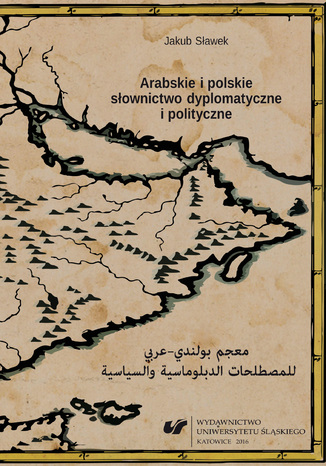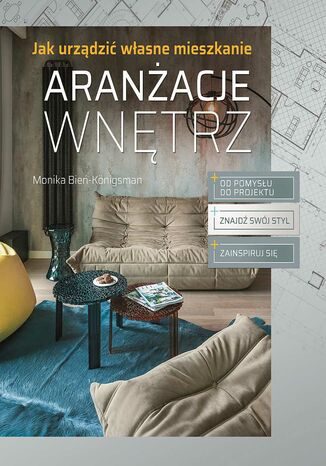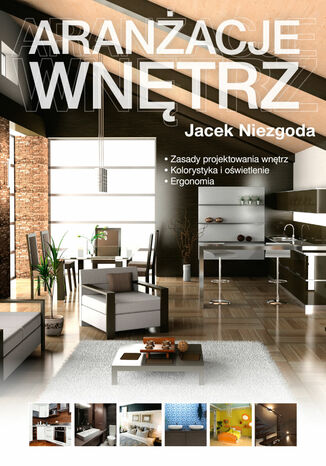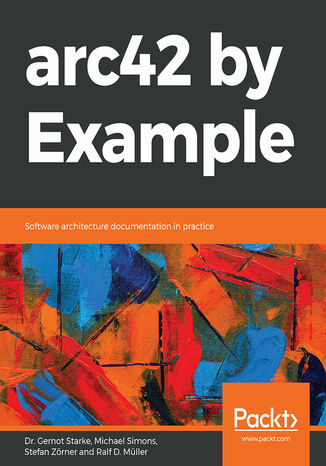Kategorie
Ebooki
-
Biznes i ekonomia
- Bitcoin
- Bizneswoman
- Coaching
- Controlling
- E-biznes
- Ekonomia
- Finanse
- Giełda i inwestycje
- Kompetencje osobiste
- Komputer w biurze
- Komunikacja i negocjacje
- Mała firma
- Marketing
- Motywacja
- Multimedialne szkolenia
- Nieruchomości
- Perswazja i NLP
- Podatki
- Polityka społeczna
- Poradniki
- Prezentacje
- Przywództwo
- Public Relation
- Raporty, analizy
- Sekret
- Social Media
- Sprzedaż
- Start-up
- Twoja kariera
- Zarządzanie
- Zarządzanie projektami
- Zasoby ludzkie (HR)
-
Dla dzieci
-
Dla młodzieży
-
Edukacja
-
Encyklopedie, słowniki
-
E-prasa
- Architektura i wnętrza
- BHP
- Biznes i Ekonomia
- Dom i ogród
- E-Biznes
- Ekonomia i finanse
- Ezoteryka
- Finanse
- Finanse osobiste
- Firma
- Fotografia
- Informatyka
- Kadry i płace
- Kobieca
- Komputery, Excel
- Księgowość
- Kultura i literatura
- Naukowe i akademickie
- Ochrona środowiska
- Opiniotwórcze
- Oświata
- Podatki
- Podróże
- Psychologia
- Religia
- Rolnictwo
- Rynek książki i prasy
- Transport i Spedycja
- Zdrowie i uroda
-
Historia
-
Informatyka
- Aplikacje biurowe
- Bazy danych
- Bioinformatyka
- Biznes IT
- CAD/CAM
- Digital Lifestyle
- DTP
- Elektronika
- Fotografia cyfrowa
- Grafika komputerowa
- Gry
- Hacking
- Hardware
- IT w ekonomii
- Pakiety naukowe
- Podręczniki szkolne
- Podstawy komputera
- Programowanie
- Programowanie mobilne
- Serwery internetowe
- Sieci komputerowe
- Start-up
- Systemy operacyjne
- Sztuczna inteligencja
- Technologia dla dzieci
- Webmasterstwo
-
Inne
-
Języki obce
-
Kultura i sztuka
-
Lektury szkolne
-
Literatura
- Antologie
- Ballada
- Biografie i autobiografie
- Dla dorosłych
- Dramat
- Dzienniki, pamiętniki, listy
- Epos, epopeja
- Esej
- Fantastyka i science-fiction
- Felietony
- Fikcja
- Humor, satyra
- Inne
- Klasyczna
- Kryminał
- Literatura faktu
- Literatura piękna
- Mity i legendy
- Nobliści
- Nowele
- Obyczajowa
- Okultyzm i magia
- Opowiadania
- Pamiętniki
- Podróże
- Poemat
- Poezja
- Polityka
- Popularnonaukowa
- Powieść
- Powieść historyczna
- Proza
- Przygodowa
- Publicystyka
- Reportaż
- Romans i literatura obyczajowa
- Sensacja
- Thriller, Horror
- Wywiady i wspomnienia
-
Nauki przyrodnicze
-
Nauki społeczne
-
Podręczniki szkolne
-
Popularnonaukowe i akademickie
- Archeologia
- Bibliotekoznawstwo
- Filmoznawstwo
- Filologia
- Filologia polska
- Filozofia
- Finanse i bankowość
- Geografia
- Gospodarka
- Handel. Gospodarka światowa
- Historia i archeologia
- Historia sztuki i architektury
- Kulturoznawstwo
- Lingwistyka
- Literaturoznawstwo
- Logistyka
- Matematyka
- Medycyna
- Nauki humanistyczne
- Pedagogika
- Pomoce naukowe
- Popularnonaukowa
- Pozostałe
- Psychologia
- Socjologia
- Teatrologia
- Teologia
- Teorie i nauki ekonomiczne
- Transport i spedycja
- Wychowanie fizyczne
- Zarządzanie i marketing
-
Poradniki
-
Poradniki do gier
-
Poradniki zawodowe i specjalistyczne
-
Prawo
- BHP
- Historia
- Kodeks drogowy. Prawo jazdy
- Nauki prawne
- Ochrona zdrowia
- Ogólne, kompendium wiedzy
- Podręczniki akademickie
- Pozostałe
- Prawo budowlane i lokalowe
- Prawo cywilne
- Prawo finansowe
- Prawo gospodarcze
- Prawo gospodarcze i handlowe
- Prawo karne
- Prawo karne. Przestępstwa karne. Kryminologia
- Prawo międzynarodowe
- Prawo międzynarodowe i zagraniczne
- Prawo ochrony zdrowia
- Prawo oświatowe
- Prawo podatkowe
- Prawo pracy i ubezpieczeń społecznych
- Prawo publiczne, konstytucyjne i administracyjne
- Prawo rodzinne i opiekuńcze
- Prawo rolne
- Prawo socjalne, prawo pracy
- Prawo Unii Europejskiej
- Przemysł
- Rolne i ochrona środowiska
- Słowniki i encyklopedie
- Zamówienia publiczne
- Zarządzanie
-
Przewodniki i podróże
- Afryka
- Albumy
- Ameryka Południowa
- Ameryka Środkowa i Północna
- Australia, Nowa Zelandia, Oceania
- Austria
- Azja
- Bałkany
- Bliski Wschód
- Bułgaria
- Chiny
- Chorwacja
- Czechy
- Dania
- Egipt
- Estonia
- Europa
- Francja
- Góry
- Grecja
- Hiszpania
- Holandia
- Islandia
- Litwa
- Łotwa
- Mapy, Plany miast, Atlasy
- Miniprzewodniki
- Niemcy
- Norwegia
- Podróże aktywne
- Polska
- Portugalia
- Pozostałe
- Przewodniki po hotelach i restauracjach
- Rosja
- Rumunia
- Słowacja
- Słowenia
- Szwajcaria
- Szwecja
- Świat
- Turcja
- Ukraina
- Węgry
- Wielka Brytania
- Włochy
-
Psychologia
- Filozofie życiowe
- Kompetencje psychospołeczne
- Komunikacja międzyludzka
- Mindfulness
- Ogólne
- Perswazja i NLP
- Psychologia akademicka
- Psychologia duszy i umysłu
- Psychologia pracy
- Relacje i związki
- Rodzicielstwo i psychologia dziecka
- Rozwiązywanie problemów
- Rozwój intelektualny
- Sekret
- Seksualność
- Uwodzenie
- Wygląd i wizerunek
- Życiowe filozofie
-
Religia
-
Sport, fitness, diety
-
Technika i mechanika
Audiobooki
-
Biznes i ekonomia
- Bitcoin
- Bizneswoman
- Coaching
- Controlling
- E-biznes
- Ekonomia
- Finanse
- Giełda i inwestycje
- Kompetencje osobiste
- Komunikacja i negocjacje
- Mała firma
- Marketing
- Motywacja
- Nieruchomości
- Perswazja i NLP
- Podatki
- Polityka społeczna
- Poradniki
- Prezentacje
- Przywództwo
- Public Relation
- Sekret
- Social Media
- Sprzedaż
- Start-up
- Twoja kariera
- Zarządzanie
- Zarządzanie projektami
- Zasoby ludzkie (HR)
-
Dla dzieci
-
Dla młodzieży
-
Edukacja
-
Encyklopedie, słowniki
-
E-prasa
-
Historia
-
Informatyka
-
Inne
-
Języki obce
-
Kultura i sztuka
-
Lektury szkolne
-
Literatura
- Antologie
- Ballada
- Biografie i autobiografie
- Dla dorosłych
- Dramat
- Dzienniki, pamiętniki, listy
- Epos, epopeja
- Esej
- Fantastyka i science-fiction
- Felietony
- Fikcja
- Humor, satyra
- Inne
- Klasyczna
- Kryminał
- Literatura faktu
- Literatura piękna
- Mity i legendy
- Nobliści
- Nowele
- Obyczajowa
- Okultyzm i magia
- Opowiadania
- Pamiętniki
- Podróże
- Poezja
- Polityka
- Popularnonaukowa
- Powieść
- Powieść historyczna
- Proza
- Przygodowa
- Publicystyka
- Reportaż
- Romans i literatura obyczajowa
- Sensacja
- Thriller, Horror
- Wywiady i wspomnienia
-
Nauki przyrodnicze
-
Nauki społeczne
-
Popularnonaukowe i akademickie
-
Poradniki
-
Poradniki zawodowe i specjalistyczne
-
Prawo
-
Przewodniki i podróże
-
Psychologia
- Filozofie życiowe
- Komunikacja międzyludzka
- Mindfulness
- Ogólne
- Perswazja i NLP
- Psychologia akademicka
- Psychologia duszy i umysłu
- Psychologia pracy
- Relacje i związki
- Rodzicielstwo i psychologia dziecka
- Rozwiązywanie problemów
- Rozwój intelektualny
- Sekret
- Seksualność
- Uwodzenie
- Wygląd i wizerunek
- Życiowe filozofie
-
Religia
-
Sport, fitness, diety
-
Technika i mechanika
Kursy video
-
Bazy danych
-
Big Data
-
Biznes, ekonomia i marketing
-
Cyberbezpieczeństwo
-
Data Science
-
DevOps
-
Dla dzieci
-
Elektronika
-
Grafika/Wideo/CAX
-
Gry
-
Microsoft Office
-
Narzędzia programistyczne
-
Programowanie
-
Rozwój osobisty
-
Sieci komputerowe
-
Systemy operacyjne
-
Testowanie oprogramowania
-
Urządzenia mobilne
-
UX/UI
-
Web development
-
Zarządzanie
Podcasty
Arabskie i polskie słownictwo dyplomatyczne i polityczne
Książka jest pierwszym w Polsce zbiorem przykładów i wzorów korespondencji dyplomatycznej w języku arabskim wraz z jej tłumaczeniem i omówieniem w języku polskim. Charakter publikacji jest naukowy oraz popularyzatorski, aby mógł być wykorzystany przez jak największą ilość potencjalnych odbiorców. Z jednej strony książka ma być podręcznikiem dla arabistów, pomocą dla tłumaczy, ale także wnosić wkład do studiów międzynarodowych, ponieważ odzwierciedla sposób myślenia Arabów, konstruowania wypowiedzi w obszarze dyplomacji, polityki międzynarodowej, terminologii specjalistycznej oraz pokazuje kulturowy aspekt tychże treści. Książka to także leksykon specyficznej terminologii, która zdaje się być współcześnie popularna. Stara się ona porządkować i tłumaczyć pewne zjawiska poprzez nie tylko zamieszczone tłumaczenie na j. polski, ale właśnie ukazanie kontekstów danych terminów i haseł. Książka dostarcza gotowych i sprawdzonych współczesnych arabskich rozwiązań językowych w obszarze dyplomacji i polityki, co powoduje możliwość wzbogacenia przez osoby władające j. arabskim słownictwa i nabrania naturalności językowej. Odbiorcą publikacji są absolwenci i studenci studiów arabistycznych, tłumacze tego języka, ale również osoby i instytucje zajmujące się szeroko pojmowaną problematyką bliskowschodnią.
Arabskie oblężenia Konstantynopola w VII-VIII wieku. Rzeczywistość i mit
Wiek siódmy dla Cesarstwa Bizantyńskiego był czasem wieloaspektowego przełomu dziejowego. Doszło wówczas do poważnego ograniczenia terytorium państwa. Kolejni cesarze dynastii, założonej przez Herakliusza, stanęli przed głębokimi problemami związanymi z konfliktem religijnym, gospodarczym regresem i załamaniem niektórych instytucji państwowych. Po śmierci Herakliusza władze konstantynopolitańskie przedefiniowały na nowo funkcje państwa, ograniczając jego obowiązki, przy jednoczesnym zapewnieniu realizacji jego podstawowych zadań. Kwestią, która musiała zostać rozwiązana przez ówczesnych cesarzy bizantyńskich, była obrona państwa przed wyniszczającymi je najazdami arabskimi, które w pewnych momentach wręcz zagrażały istnieniu cesarstwa. Arabskie oblężenia Konstantynopola, oprócz zwycięskich wojen Herakliusza z Persją, późniejszej utraty, do niedawna najważniejszych, bizantyńskich prowincji – Syrii i Egiptu oraz reform wojskowych i gospodarczych następców wielkiego cesarza, można zaliczyć do najistotniejszych wydarzeń w VII i początkach VIII w. Doczekało się wreszcie kompletnego, odrębnego studium w postaci niniejszej monografii. Autor nie tylko dogłębnie je analizuje na szerokim tle historycznym, ale również zastanawia się nad procesem ich mitologizacji. Czytelnik znajdzie w książce wiele istotnych i interesujących spostrzeżeń dotyczących historii cesarstwa bizantyńskiego w okresie narodzin islamu i pierwszego wieku ekspansji muzułmańskiego kalifatu na Bliskim Wschodzie.
Arabskie opowieści 2. Historie prawdziwe
Podczas piętnastu lat pobytu w Libii Tanya Valko zebrała tyle doświadczeń, że starczyłoby na niejedną powieść. Teraz zdecydowała się swoimi wspomnieniami podzielić. Arabskie opowieści 2. Historie prawdziwe znów przenoszą czytelnika w czasy, gdy Libią niepodzielnie rządził pułkownik Muammar Kaddafi, trzymając kraj żelazną ręką. Autorka prezentuje barwne historie Polaków pracujących w Libii i Polek będących w związkach z Libijczykami. Wbrew stereotypom nie wszystkie chrześcijańsko-muzułmańskie małżeństwa kończą się źle. Valko ukazuje również kobiety, które robią karierę, bez wahania wyrażają swoje zdanie, są niezależne i szczęśliwe. Nieustająco jednak piętnuje podłe zachowania szowinistycznych, despotycznych mężczyzn, ale też otumanionych przez religię niewiast. W inspirowanej osobistymi przeżyciami powieści występuje cała galeria postaci arabskich kumpelek i orientalnych kolegów Valko. Ich dzieje czasami są radosne i zabawne, ale przeważnie dramatyczne. Niezwykła jest historia doktor Maliki, pierwszej libijskiej pani ambasador, kobiety ambitnej i aktywnej zawodowo, pracującej w libijskim Ministerstwie Spraw Zagranicznych, czy Sofii, pół Angielki, pół Palestynki, wdowy, której po śmierci męża jego libijska familia odebrała dzieci pozwala na to muzułmańskie prawo i matka nie ma w konfrontacji z nim najmniejszych szans. Frustrujące są losy Samiry, świetnie zarabiającej pani inżynier, notorycznie gwałconej przez powszechnie szanowanego męża, z którym nie mogła się rozwieść, gdyż stanowiłoby to wstyd dla całej rodziny. Valko ukazuje też postawy muzułmańskich mężczyzn tych tradycyjnych i tych nowoczesnych ich stosunek do religii, kobiet oraz nieszablonowy styl bycia. W Arabskich opowieściach autorka wyjawia, że jej idealne małżeństwo wskutek stresu wywołanego intrygami ambasadora despoty stanęło w Libii przed ciężką próbą. Kryzys małżeński jest zawsze trudny i przysparza partnerom wiele bólu, lecz przechodzić go z dala od ojczyzny i domu rodzinnego, w kraju muzułmańskim, w otoczeniu obcych, często wrogo nastawionych ludzi, to prawdziwa gehenna. Arabskie opowieści 2 to kolejna przygoda z Orientem, która zapiera dech w piersiach. Dajcie się uwieść magii, ale też otwórzcie szeroko oczy na niezwykłość i odmienność arabskiej kultury i obyczajów.
Arabskie opowieści. Historie prawdziwe
Wielokrotnie podczas spotkań z Tanyą Valko i lektury jej książek pojawia się pytanie: skąd ona to wszystko może wiedzieć? Z własnego życia! "Arabskie opowieści" opisują ekscytujące losy zwariowanej arabistki, która w latach osiemdziesiątych zeszłego stulecia z duszą na ramieniu poleciała do Libii, gdzie rządził Kadafi. Dowiemy się, jak zaczęła się przygoda Valko z krajami arabskimi. Poznamy ciężkie, a czasem cudowne życie kontraktowiczów, przeczytamy o rozwiązłości i pijaństwie na polskich kampach, o nieszczęśliwych wypadkach, często kończących się śmiercią, gwałtach i przemocy, a także o kontraktowych miłościach i przyjaźniach. Będziemy śledzić niezwykłe losy polskich żon Arabów, nie zawsze nieudane i toksyczne związki muzułmańsko-chrześcijańskie, ale też tragedie kobiet uwikłanych w relacje z podłymi mężczyznami. W "Arabskich opowieściach" miłośniczki "Arabskiej sagi" odnajdą pierwowzory kluczowych postaci z jej kart. Większość z nich przewinęła się przez barwne życie pisarki. Valko opisuje świat tak, jak go zapamiętała i postrzegała. "Arabskie opowieści" to podsumowanie ponad 25-letniego pobytu autorki w krajach Orientu.
Arachnologia to debiut poetycki Annais. Tytuł zbioru odsyła do jednego z nurtów feminizmu w literaturoznawstwie. Tomik zawiera 37 wierszy (tych sprzed lat i całkiem świeżych), część z nich została nagrodzona w czterech konkursach poetyckich: Kochasz, więc myślisz Domu Kultury w Świdniku (1999), XXI konkursie Zagłębiowski Pegaz w Będzinie (2010) oraz w V i X edycji Ogólnopolskiego Turnieju O Laur Zawodziański Miejskiego Domu Kultury Bogucice-Zawodzie w Katowicach (2006 i 2011). Trzy główne tematy twórczości poetyckiej Annais to eros, tanatos i poesis, choć w tomiku jest także miejsce dla kilku eksperymentów słowotwórczych z nutą humoru oraz wierszy dotyczących refleksji na inne tematy. Uwaga! Niektóre wiersze (zwłaszcza jeden) mogą zostać uznane za kontrowersyjne ze względów religijnych. Nie chcąc urazić czyichkolwiek uczuć, odradzamy czytanie tego tomiku osobom głęboko wierzącym. Posłowie do Arachnologii napisał Leszek Żuliński, poeta, krytyk literacki, publicysta, juror wielu konkursów literackich, członek Związku Literatów Polskich. www.zulinski.pl To bardzo piękne wiersze. I mądre. Niezwykle wiwisekcyjne, wchodzące w głąb własnego interioru śmiało i z dużą potencją samoświadomości. Cudownie balansujące pomiędzy intymnością a obserwacją świata. Naruszające rozmaite tabu, ale też jakby sakralizujące to, co w nas najskrytsze i wydobywające z intymności jej sens i siłę. (z posłowia Leszka Żulińskiego) Opinie krytyków: "zamiast pójść spać, wciągnąłem się w Pani tomik do tego stopnia, że spać nie poszedłem, tomik dwukrotnie czytałem, odłożyłem inne robótki i napisałem posłowie [...] To bardzo dobre wiersze!; tak trzymać!" z listu Leszka Żulińskiego, poety, krytyka, jurora wielu konkursów poetyckich www.zulinski.pl "Wiersze Pani uderzyły mnie swoją zmysłowością, wielością kulturowych ścieżek, apoteozą życia. Ich, jakże wyraźny erotyzm przenosi czytelnika w świat niemal antyczny. Pozwala mu na uczestnictwo w starożytnych bachanaliach... [...] nie unika Pani tematów trudnych i bolesnych, zmierzając się z chłodem otaczającego świata z samotnością i przemijaniem. Pani poezja pomimo penetracji najtrudniejszych obszarów zawsze powraca do erotycznego, zmysłowego epicentrum świata [...] Czekając na ten jakże ciekawy debiut poetycki oczekuję wzbogacenia Pani wierszy o szczegół, zamierzoną bylejakość, potoczność[] Z poetyckim pozdrowieniem i z ciepłą nadzieją na druk zmysłowej Arachnologii." z listu Jacka Golonki, poety, animatora kultury, przewodniczącego jury konkursu poetyckiego Zagłębiowski Pegaz Annais jest kwintesencją kobiecości w sensie wrażliwości i sposobu odczuwania świata. [...] Niebagatelne znaczenie w twórczości Annais ma erotyka jako nieodłączna część kontaktów między płciami. [...] I to właśnie jest nieustannie wyczuwalne, namacalne wręcz w twórczości Anny. Wiersze Annais snują się niczym pajęcza sieć, mogą dopaść nas wszędzie, jak w wierszu Wierszobranie. Poezja jawi się tu jako nici pajęcze, przylepiające się do naszych głów, wciskające się w nasze myśli w najmniej spodziewanych momentach codzienności. Poezja nie jest dana wybrańcom, dotyczy nas wszystkich, powinniśmy zatem czerpać z niej garściami, zbierać niczym dojrzałe grona. Tomik stanowi studium kobiecych odczuć, można rzec: typowej dla nas huśtawki nastrojów od melancholii, wpadającej w depresję po euforię płynącą ze spełnienia erotycznego. To obraz współczesnej kobiety, szukającej swoich źródeł w doznaniach ciała i duszy, które zdają się być nierozłączne. [...] Przyjemnie się czyta te wiersze, odkrywcze i świeże, wnoszące ciepły kobiecy powiew, głębszą refleksję nad naszym skomercjalizowanym, uciekającym od duchowości światem." dr Katarzyna Krzan, kulturoznawczyni, redaktor naczelna wydawnictwa e-bookowo (z recenzji tomiku Arachnologia, "SosnArt" 2011, nr 7)
Urządzanie własnego wnętrza to fascynująca przygoda. Jednak kiedy robimy to po raz pierwszy w życiu, możemy mieć sporo dylematów. Niezależnie od tego, czy planujemy gruntowny remont, czy czekamy na odbiór mieszkania, by urządzić je od podstaw, czy mamy ochotę na metamorfozę salonu lub sypialni – w każdym z tych przypadków wiedza na temat procesu projektowania jest bardzo przydatna. Zawarte w książce informacje zapoznają z obecnie obowiązującymi trendami i pomagają zaprojektować najlepszą dla nas przestrzeń, w której będziemy się czuć komfortowo. Dzięki niej poznamy swój własny styl i z łatwością urządzimy nawet najbardziej wymagające wnętrze.
Książka podpowiada, jak zaplanować stylowe i gustowne mieszkanie. Czytelnik dowie się z niej, jakie są podstawowe zasady projektowania wnętrz: jak dobierać kolory, wykorzystywać złudzenia optyczne, jak zbudować architekturę za pomocą oświetlenia i komfortowo urządzić łazienkę, sypialnię czy pokój dzienny.
arc42 by Example. Software architecture documentation in practice
Dr. Gernot Starke, Michael Simons, Stefan Zörner, Ralf D. Müller
When developers document the architecture of their systems, they often invent their own specific ways of articulating structures, designs, concepts, and decisions. What they need is a template that enables simple and efficient software architecture documentation. arc42 by Example shows how it's done through several real-world examples.Each example in the book, whether it is a chess engine, a huge CRM system, or a cool web system, starts with a brief description of the problem domain and the quality requirements. Then, you'll discover the system context with all the external interfaces. You'll dive into an overview of the solution strategy to implement the building blocks and runtime scenarios. The later chapters also explain various cross-cutting concerns and how they affect other aspects of a program.








